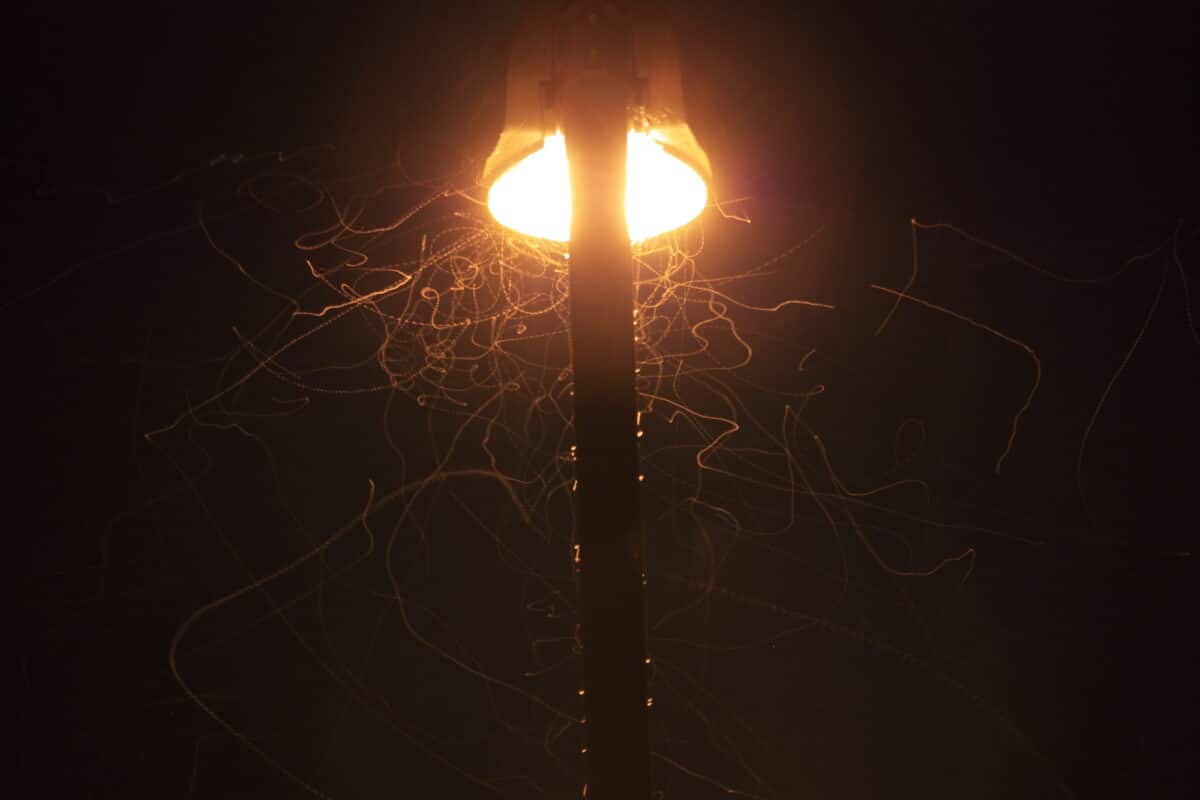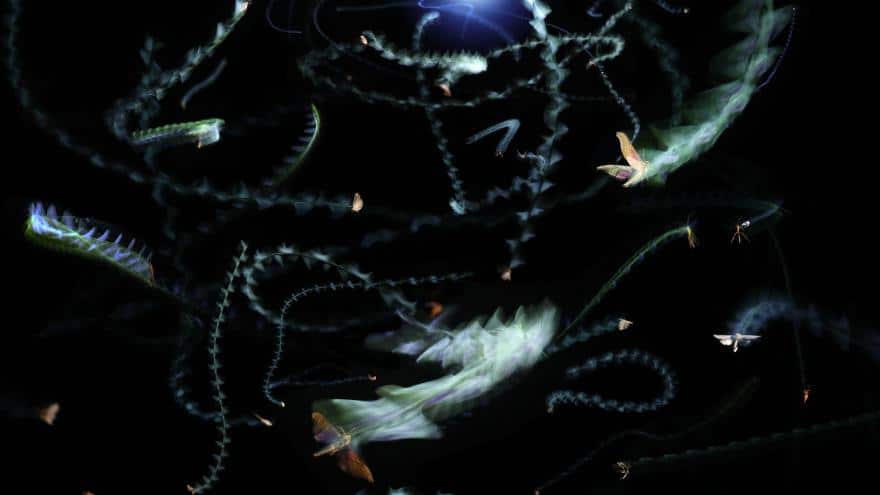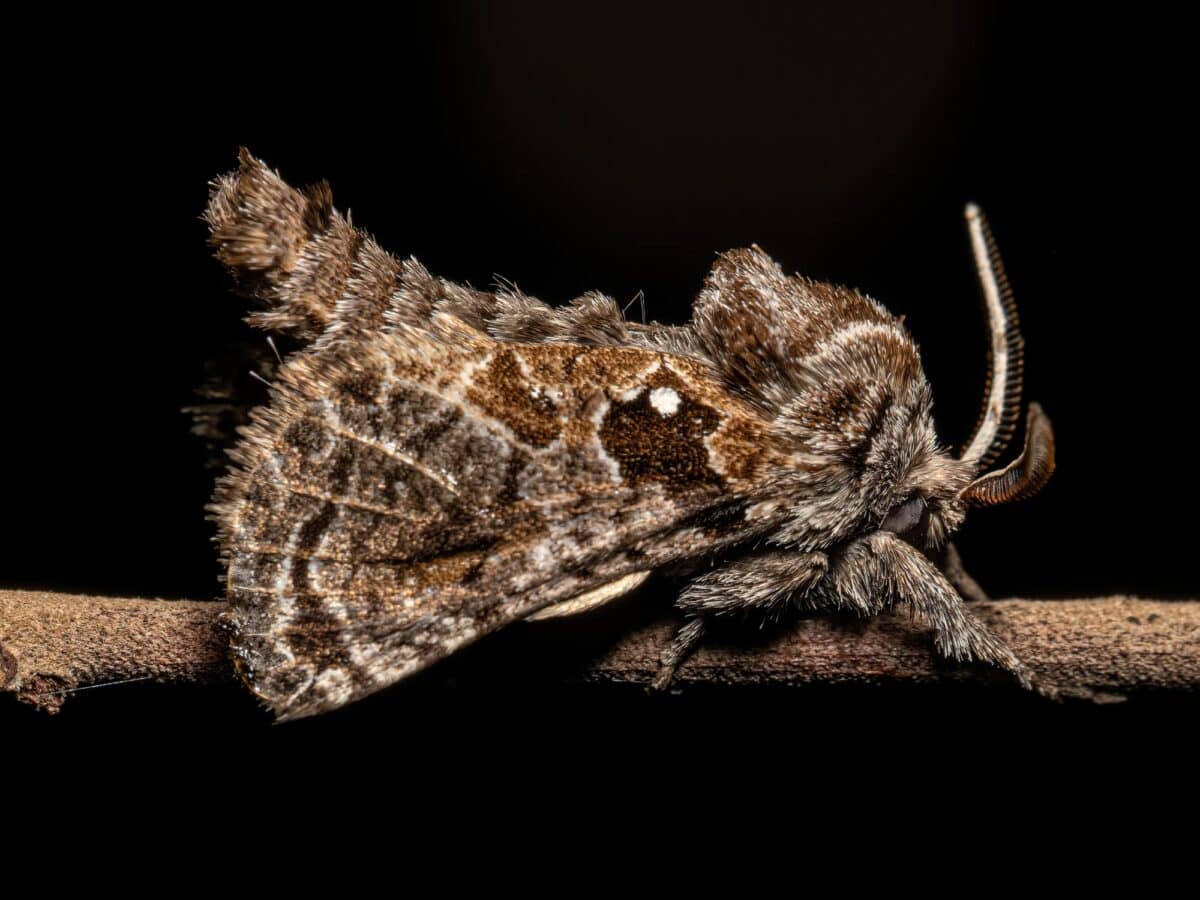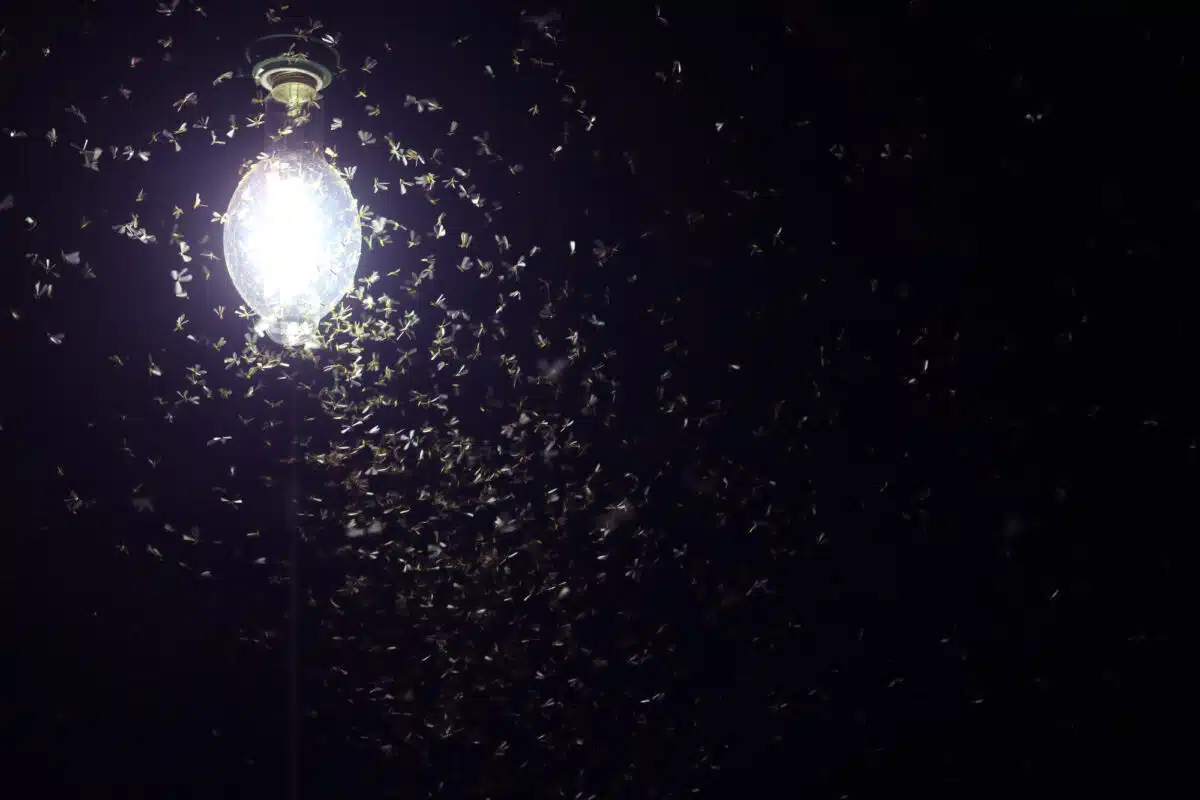We’ve all seen insects swarm towards a source of light at night like, well, like a moth to a flame.
Notably, insects seem to only be attracted to artificial light sources. It’s not like they fly upwards towards the moon. No, instead they congregate at the light by your front door. Theories that have flown around include that they are attracted to the heat of the source, or that they confuse the light source with the moon in an attempt to navigate.
But why do insects actually gather by light sources? A recent study led by Samuel Fabian sought to answer that exact question.
Background

The problem researchers have had in studying the attraction of insects to light is simple: bugs fly really fast. In low-light conditions, this has made their movements hard to track, with everything instead appearing blurry. Luckily, motion-sensitivity has been improved in cameras in recent years.
In Dr Fabian’s study, published by Nature Communications, motion-sensitive cameras were set up under both controlled conditions (in a lab) and outdoors (in backyards and the Costa Rican wilderness). Reflective markers were attached to many insects’ bodies, which allowed for the cameras to track the motions of the insects as they flew.
So, Why Are Insects Attracted To Light?

Insects are, in fact, not flying towards the light. Instead, they follow an innate response known as the dorsal-light-response (DLR), which, under natural moonlit conditions, aids in their orientation by keeping them flying at a steady angle relative to the light source. In other words – gravity affects flying insects less than it does us, so they naturally face their back towards the light of the moon to keep oriented.
So, insects have evolved to use the brightness of the sky to figure out which way is up, and they tilt their backs towards it.
This is why insects circle around a light source. Not because they are spiraling towards it, but rather because they are stuck in a loop trying to fly straight.
Implications

Insects may circle artificial light for a near suicidal length of time, depleting their energy reserves and increasing their vulnerability to predators. Moreover, if the light source comes from below, insects will flip upside down and subsequently crash into the floor.
These phenomena contribute to the decline of insect populations, which is a growing concern. Recent studies have suggested that, over the last few decades, insect population numbers and diversity have declined by 20–75% in many taxonomic groups and ecosystems.
This is alarming considering that insects make up roughly half of all existing species on Earth today. Insects are responsible for maintaining healthy soil, pollinating flowers and crops, recycling nutrients, and controlling pests in ecosystems worldwide. Essentially, if they die, everyone dies.
Future Studies

Further research is necessary to determine whether there are wavelengths that affect insects’ innate DLR less than others. Interestingly, there are species of nocturnal insects that don’t seem to be attracted to light at all; this too warrants further study.
Conclusion
We can all do our bit for insect conservation: just turn off your lights.
You may also like:
- How Bees Pollinating Help Save the World
- The Most Massive and Dangerous Insect Swarm: Locust Plagues
Join our Forum for free today!

- Glow-in-the-Dark Sharks & Other Fascinating Bioluminescent Fish - July 10, 2024
- Why Flamingos Are Totally Hardcore - July 3, 2024
- Nuclear Tech to Combat Poaching: Radioactive Rhino Horns - July 2, 2024

